
Lijiang Geography
Lijiang City is located in the northwest part of Yunnan Province, at the junction of the Yunnan-Guizhou Plateau and the Qinghai-Tibet Plateau. The city center is situated at 100°25′ E longitude and 26°86′ N latitude, covering a total area of 20,600 square kilometers. It borders Diqing Tibetan Autonomous Prefecture to the north, Dali Bai Autonomous Prefecture to the south, Nujiang Lisu Autonomous Prefecture to the west, and Liangshan Yi Autonomous Prefecture and Panzhihua City in Sichuan to the east. Lijiang is 527 kilometers away from Kunming City.
Topography and Landforms
Lijiang City’s terrain is high in the northwest and low in the southeast. The highest point is the main peak of Jade Dragon Snow Mountain at an altitude of 5,596 meters, while the lowest point is in Tangba River Mouth, Shilongba Township, Huaping County, at an altitude of 1,015 meters, creating a maximum elevation difference of 4,581 meters. To the west of Jade Dragon Snow Mountain lies the Hengduan Mountain Range, characterized by deep gorges and steep mountains. To the east, the terrain consists of the Yunnan-Guizhou Plateau with higher and broader mountains. The region features complex landforms with numerous valleys, creating a diverse landscape. There are 111 small and large basins scattered among the mountains, most of which are above 2,000 meters in elevation, with the largest being Lijiang Basin, covering about 200 square kilometers and an average altitude of 2,466 meters.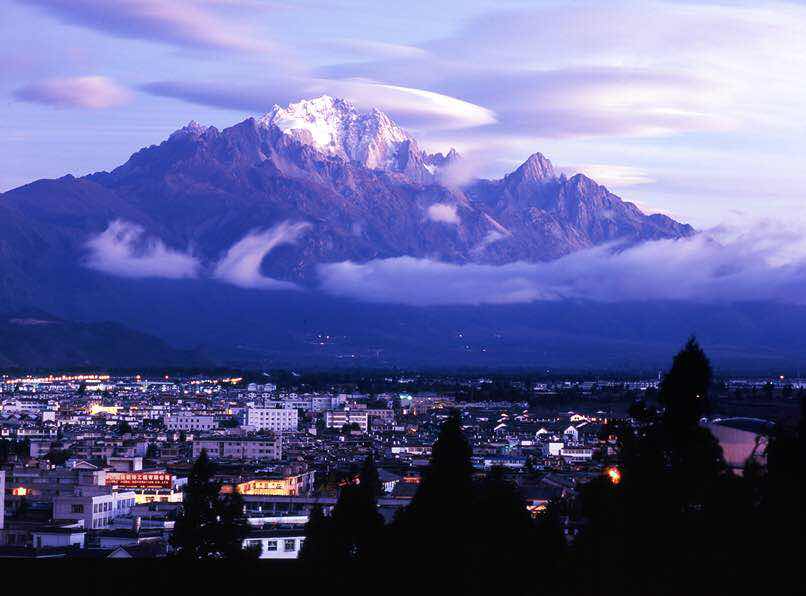
The Jinsha River, flowing through Lijiang, along with the three major mountain ranges of Laojun Mountain, Jade Dragon Mountain, and Mianmian Mountain, forms the backbone of Lijiang’s topography. Laojun Mountain runs from north to south like a barrier on the western side, with its main peak at 4,247.4 meters. Jade Dragon Snow Mountain, located 15 kilometers from Lijiang’s city center, features alpine glacier landforms and is snow-covered year-round with 13 peaks connected from end to end. The eastern side is dominated by Mianmian Mountain. Lijiang has 12 high mountains with altitudes ranging from 3,500 to 5,000 meters, and numerous mid-elevation mountains (2,500-3,500 meters) spread across all counties, particularly in Ninglang and Yongsheng. Mountains below 2,500 meters are predominantly found in the southeast and south.
Climate
Lijiang’s highest elevation is 5,596 meters, and its lowest is 1,015 meters, with the city center at 2,418 meters. It is a low-latitude, high-altitude area with distinct seasonal climatic variations and diverse climate types. The region exhibits vertical climate characteristics with the saying “four seasons in one mountain, different weather in ten miles.” The annual average temperature ranges from 12.6°C to 19.9°C.
Hydrology
River Systems
Lijiang’s rivers belong to two major watersheds and three major water systems: the Jinsha River system and the Yalong River system of the Yangtze River basin, and the Heihe River system of the Lancang River basin. The Yangtze River basin covers an area of 20,799 square kilometers, accounting for 98% of the total area, while the Lancang River basin covers 420 square kilometers, accounting for 2%. Lijiang has 93 tributaries of the Jinsha, Yalong, and Lancang rivers, with 21 rivers having a basin area of over 200 square kilometers.
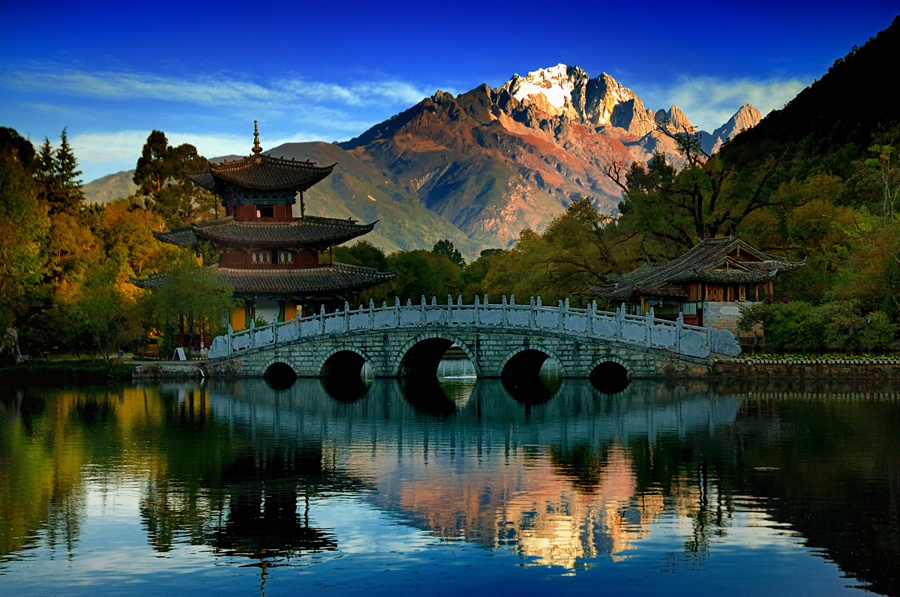
Lakes
Apart from Lugu Lake, Lijiang has two larger natural lakes: Chenghai and Lashihai. Chenghai, located in Yongsheng County, is one of the world’s three natural sources of spirulina and the only one in China, covering 77.2 square kilometers with a storage capacity of 1.987 billion cubic meters and an average depth of 25.74 meters, making it the fourth-largest lake in Yunnan. Lashihai, located in Lashi Town, Yulong County, is 8 kilometers from Lijiang’s city center, with an oval-shaped lake area at an altitude of 2,450 meters, a depth of 2.5-4.5 meters, a water area of 241 square kilometers, and a lake surface area of 8.5 square kilometers. It was established as Yunnan’s first highland wetland reserve and migratory bird habitat in 1998 and was listed as an internationally important wetland in 2005.
Natural Resources
Land Resources
As of 2022, Lijiang has 185,745.95 hectares (2,786,189 acres) of arable land, including 29,283.03 hectares (439,245 acres) of paddy fields (15.77%), 5,857.66 hectares (87,865 acres) of irrigated land (3.15%), and 150,605.26 hectares (2,259,079 acres) of dry land (81.08%). Yongsheng and Ninglang Yi Autonomous County have the largest arable land areas, accounting for 64.28% of Lijiang’s total arable land. All arable land is located in areas with a double-cropping system and annual rainfall between 800 and 1,200 millimeters.
Biological Resources
Lijiang boasts diverse flora and fauna, with over 13,000 species, making it one of China’s notable plant and animal protection bases and a key forest area in Yunnan. It has been identified by the World Conservation Union (IUCN) as one of the 25 global biodiversity hotspots in China’s Hengduan Mountains. The region is home to several nationally protected species, including the Yunnan golden monkey, clouded leopard, and musk deer, as well as rare plants like the Himalayan yew, Isoetes hypsophila, and Yulong fern. Lijiang has a forest coverage rate of 72.14%, making it a crucial area for natural forest protection in China.
Lijiang records 112 species of mammals from 21 families and 8 orders, 446 species of birds from 46 families and 17 orders, 51 species of amphibians and reptiles from 14 families and 3 orders, and over 70 species of fish from 15 families and 5 orders. The region also has 4,163 species (subspecies) of vascular plants from 1,120 genera in 224 families, including over 3,200 species of seed plants, over 2,000 medicinal plants, 2,266 endemic species to China, and 617 endemic species to Yunnan. Jade Dragon Snow Mountain is a world-renowned botanical specimen type locality. Over a hundred new and variant plant species are named after Lijiang’s mountains and rivers, earning the city the titles “Kingdom of Alpine Plants” and “Home of Medicinal Herbs.”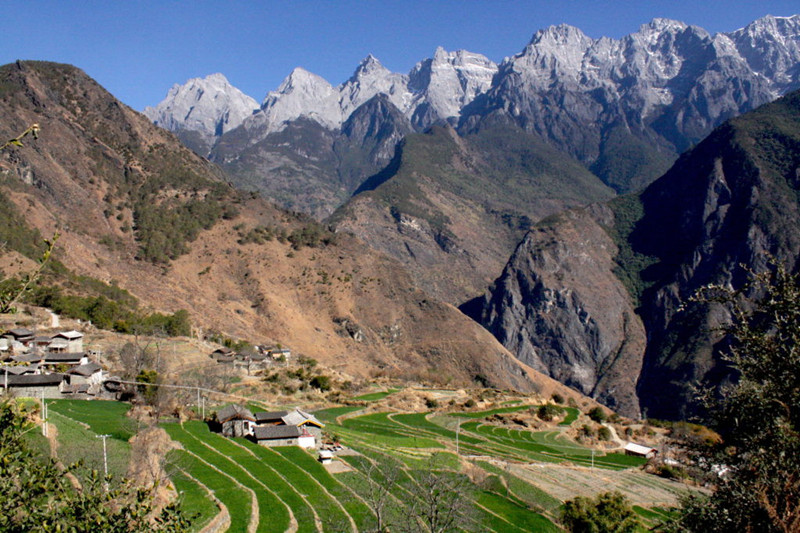
Nature Reserves and Forest Parks
Lijiang Laojun Mountain National Park Provincial Nature Reserves Lijiang Lashihai Highland Wetland Provincial Nature Reserve Lijiang Yulong Snow Mountain Provincial Nature Reserve Lugu Lake Provincial Nature Reserve
Water Resources
Lijiang is rich in water resources, with its river systems belonging to two major watersheds and three major water systems: the Jinsha River system, the Yalong River system of the Yangtze River basin, and the Heihe River system of the Lancang River basin. The city has 93 tributaries of the Jinsha, Yalong, and Lancang rivers, with 21 rivers having a basin area of over 200 square kilometers. Lijiang’s total water resources amount to 49.985 billion cubic meters, with a theoretical hydroelectric power potential of 114 million kilowatts.
The Jinsha River, flowing through Lijiang for 615 kilometers, has plans for eight large hydropower stations (“one reservoir, eight stages”) including Longpan, Liangjia, Liyuan, Ahai, Jinanqiao, Longkaikou, Ludila, and Guanyinyan. Six of these stations are already connected to the grid, with a total installed capacity of 20.96 million kilowatts and an annual power generation of 88.3 billion kilowatt-hours, making it one of the largest planned hydropower bases in China for transmitting electricity from the west to the east.
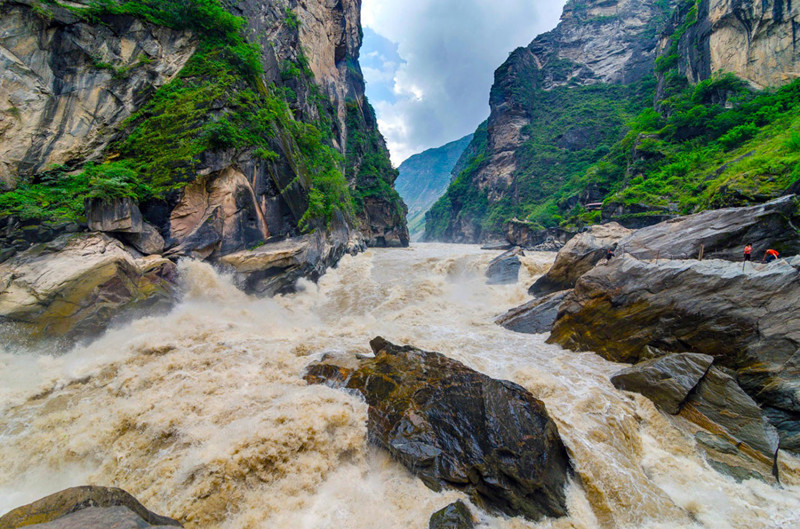
Water Resources in 2021
In 2021, Lijiang had an average precipitation of 853.8 millimeters, equivalent to a total precipitation of 17.54 billion cubic meters, 7.0% less than the previous year and 14.2% less than the average year. The city’s total water resources were 5.779 billion cubic meters, 10.3% less than the previous year and 28.3% less than the average year, indicating a dry year. The average water production per square kilometer was 281,200 cubic meters, with a per capita water resource volume of 4,600 cubic meters.
By the end of 2021, Lijiang’s water conservancy projects had a total storage volume of 243.3 million cubic meters, 20.01 million cubic meters less than the previous year, representing a 7.6% decrease.
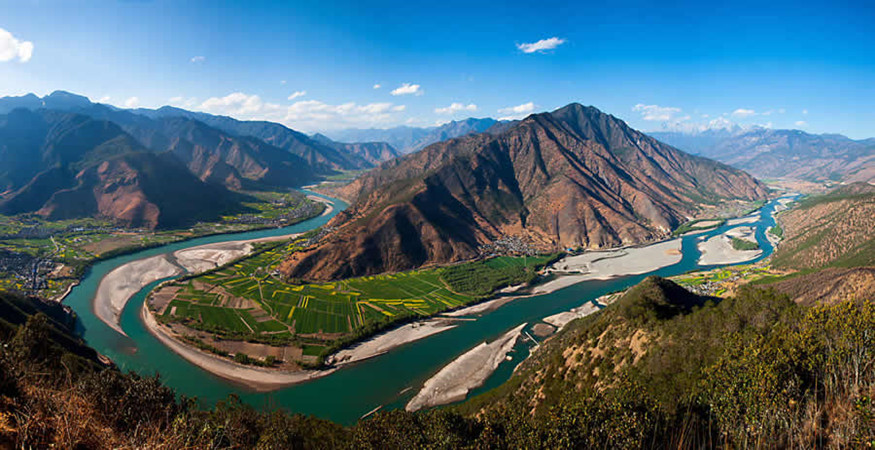
Mineral Resources
Lijiang has unique geological structures and diverse mineralization conditions, leading to a variety of rich mineral resources with regional characteristics. The city has discovered over 30 types of minerals across more than 350 mineral sites, including one natural gas site and several geothermal sites. It has significant coal reserves and high-quality deposits, making it the leading coal resource area in western Yunnan. Other valuable minerals include copper and granite.












